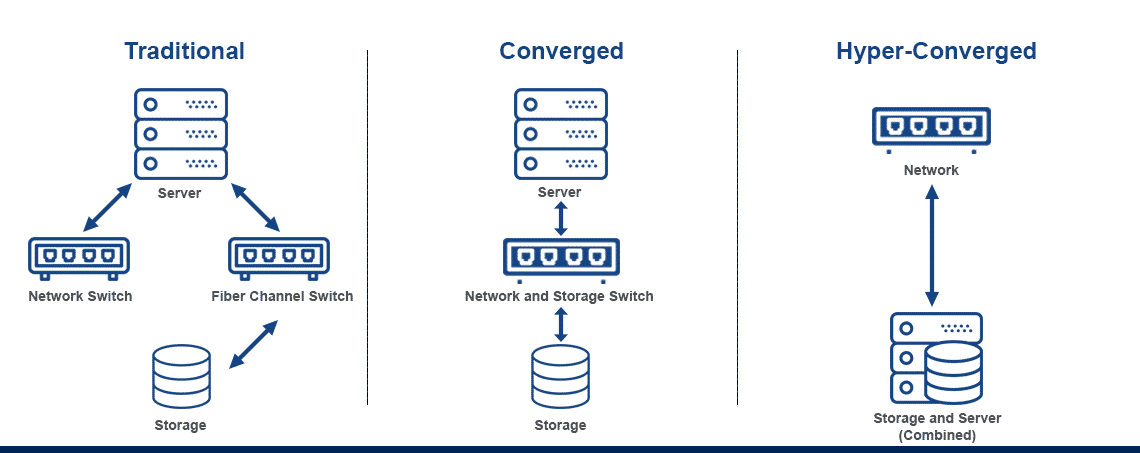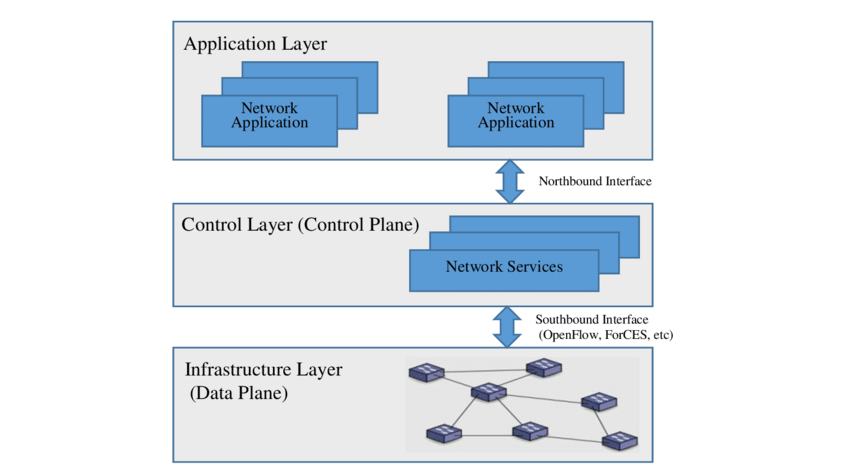This page is currently queued for revision.
#
Network*
#
Acronyms, Abbreviations, and Initialisms

#
Traditional Networking
The traditional networking model is a layered approach with physical switches at the top layer and logical separation at the hypervisor level.
This model allows for the use of traditional network security tools. There may be some limitations on the visibility of network segments between VMs.
#
Converged Networking
The converged model is optimized for cloud deployments and utilizes standard perimeter protection measures. The underlying storage and IP networks are converged (across the same infrastructure, as opposed to having a separate LAN and SAN) to maximize the benefits for a cloud workload.
You can think of a converged network model as being a super network, one that is capable of carrying a combination of data, voice, and video traffic across a single network that is optimized for performance.
This method facilitates the use of virtualized security appliances for network protection.
#
Software-Defined Networking
SDN is the idea of separating the network control plane from the actual network forwarding plane. This allows for greater control over networking capabilities and for the integration of such things as APIs.
#
Characteristics
Allows network managers to configure, manage, secure, and optimize network resources very quickly via dynamic, automated SDN programs, which they can write themselves because the programs do not depend on proprietary software.
When implemented through open standards, SDN simplifies network design and operation because instructions are provided by SDN controllers instead of multiple, vendor-specific devices and protocols.
Network control is directly programmable because it is decoupled from forwarding functions.
Abstracting control from forwarding lets administrators dynamically adjust network-wide traffic flow to meet changing needs.
Network intelligence is (logically) centralized in software based SDN controllers that maintain a global view of the network, which appears to applications and policy engines as a single, logical switch.
#
Elements
Enables centralized management and control, automation, and policy enforcement across physical and virtual network environments.
Relays information between the controller (control layer) and the individual network devices (such as physical switches, access points, routers, and firewalls).
Relays information between the controller (control layer) and the applications and policy engines, to which an SDN looks like a single logical network device.
The SBI and NBI are considered the SDN architecture APIs, as they define the communication between the applications, controllers, and networking systems.
#
Benefits
The following are primary benefits are observed by using SDN:
- Hardware agnostic
- Management plane is separated from the data plane
#
Layers
In the SDN architecture, the splitting of the control and data forwarding functions is referred to as "disaggregation," because these pieces can be sourced separately, rather than deployed as one integrated system. This architecture gives the applications more information about the state of the entire network from the controller, as opposed to traditional networks where the network is only application-aware.

#
Application Layer
The application layer provides:
- Business applications
APIs act as a bridge between the application and control layers using the NBI.
#
Control Layer
The control layer, also referred to as the control plane, refers to the processes that control the work done by the network device but do not directly impact the forwarding of individual frames or packets.
This layer provides:
- Network services
- SDN control software
#
Infrastructure Layer
The infrastructure layer, also referred to as the infrastructure plane, refers to the actions that devices take to forward data.
This layer provides:
- Physical network devices (which may be geographically disparate)

